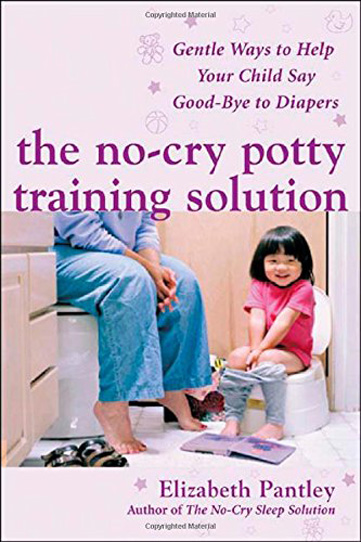The No-Cry Potty Training Solution
Gentle Ways to Help Your Child Say Good-Bye to Diapers

Format: Paper Back & Digital
208 Pages
ISBN-13: 9780071476904
Excerpts
Quick Facts About Potty Training
Potty Training – Get Ready, Get Set, GO!
The Potty Training Readiness Quiz
Get Advice
The No-Cry Potty Training Questions and Answers
Summary
BOOK SUMMARY FROM THE PUBLISHER
Potty training your child shouldn’t require an instruction manual the size of a telephone book, nor should it require a visit to your pediatrician. It certainly shouldn’t involve a private consultant’s assistance! Yet you may be like many other parents who get the idea that this is a complicated, difficult undertaking, and can’t possibly be done with ease. I have good news. As a parent educator and four time veteran of the toilet training process, I know that potty training can be simple, pleasant, and yes, even fun. I’ve written this guide so that you can sail through the potty training process easily and joyfully with your child.
A Few Quick Facts About Potty Training
The perfect age to begin potty training is different for every child. Your child’s best starting age could be anywhere from eighteen to thirty-two months. Pre-potty training preparation can begin when a child is as young as ten months.
- Teaching your child how to use the toilet can, and should, be as natural as teaching him to build a block tower or use a spoon.
- No matter the age that toilet training begins, most children become physically capable of independent toileting between ages two and a half and four.
- It takes three to twelve months from the start of training to daytime toilet independence. The more readiness skills that a child possesses, the quicker the process will be. (Take the Readiness Quiz in Chapter 2)
- The age that a child masters toileting has absolutely no correlation to future abilities or intelligence.
- Nighttime dryness is achieved only when a child’s physiology supports this–you can’t rush it, but you can nudge nature along in a few different ways. (See Chapter 5)
- A parent’s readiness to train is just as important as a child’s readiness to learn.
- Training need not be expensive. A potty chair, a dozen pairs of training pants and a relaxed and pleasant attitude are all that you really need. Anything else is truly optional.
- More than 80% of children experience setbacks in toilet training. This means that what we call “setbacks” is really just the usual path to mastery of toileting.
- Understanding the reason for the setback and setting a plan will bring success. (See Chapter 6, Problem Solving)
- 98% of children are completely daytime independent by age four.
Share this!
Excerpted with permission by McGraw-Hill Publishing from The No-Cry Potty Training Solution (McGraw-Hill, 2020).
You are welcome to reprint the article on your website or in your newsletter, provided that you reprint the entire article, including the complete byline with author’s name and book title. Please also send a notice or copy to [email protected]. Thank you.
